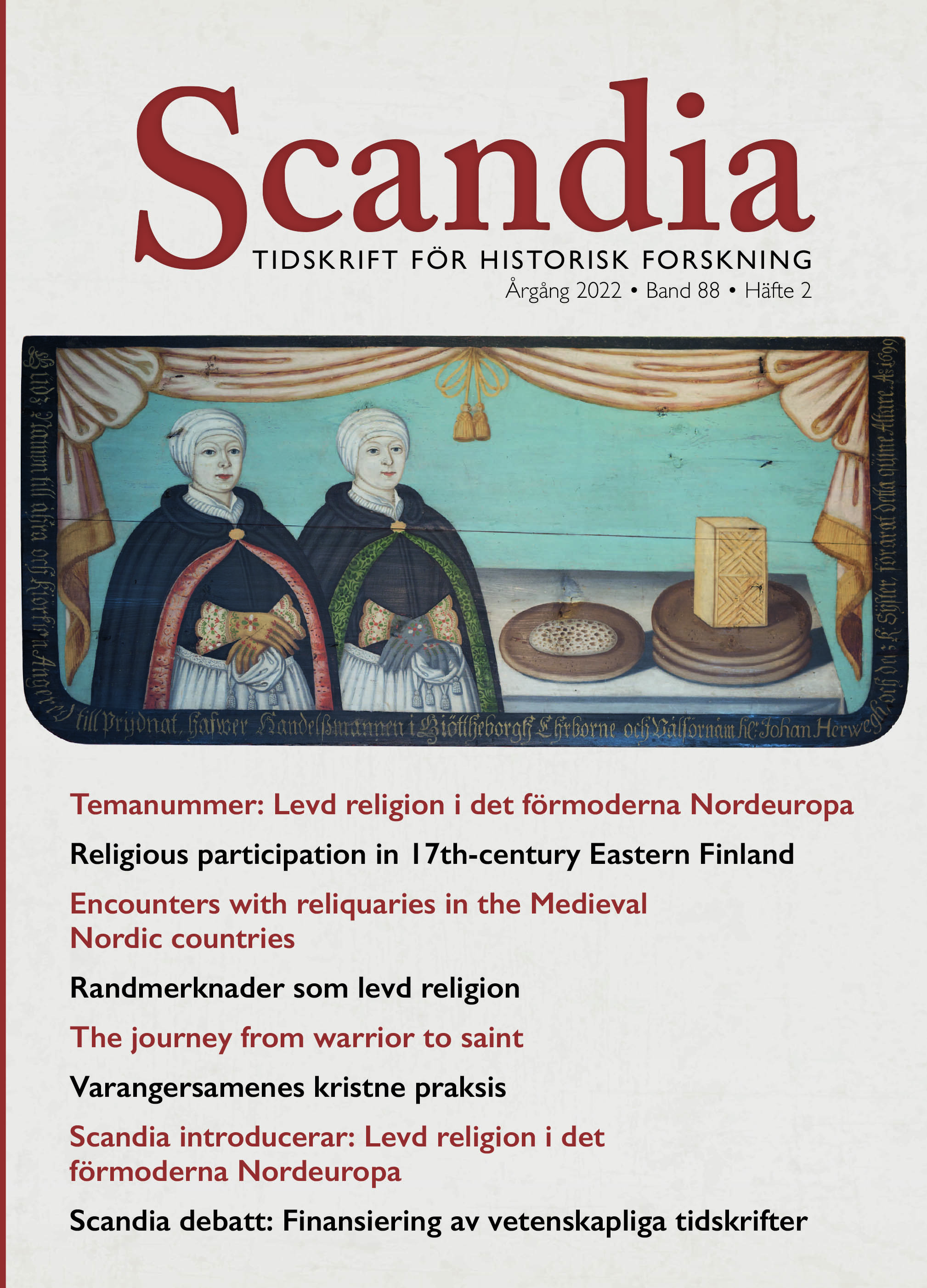Marginal notations as lived religion? A pilot study based on marginal notations from a Catholic legendary in a Protestant school library
DOI:
https://doi.org/10.47868/scandia.v88i2.24801Keywords:
marginal notations, book history, Denmark, lived religion, hagiographyAbstract
This article examines marginal notations in a 1492 copy of Passionael, a vernacular collection of the lives of saints. The copy, now known by its shelf-mark Syddansk Universitet RARA M 15, was housed at the library of the Herlufsholm school for boys in the late eighteenth century. At various points around 1800, pupils at the school read and interacted with the book through marginal notations, just as they did with other books in the school library. The copy of Passionael contains interactions in three legends, two of which pertain to Scandinavian holy kings.
The article interprets these interactions with religious stories as potential expressions of lived religion since these interactions 1) took place outside the control of an institution, 2) could have been shaped by the framework of that institution, and 3) the intended meaning remains obscure as it is the product of individual rather than institutional agency. By applying the theoretical lens of lived religion, the article argues that the figures in these Catholic stories would have been accessible and familiar to the Protestant pupils and that the responses to the versions of these stories encountered in Passionael could have a religious dimension.
In order to offer an interpretation of how to understand these marginal notations as interactions with stories and, in turn, as expressions of lived religion, it is necessary to see which episodes in the stories the notations respond to and which forms the notations take. By examining to which parts of the text the notations respond, we see that these interactions are made at junctures and episodes that would be comprehensible to a Protestant audience, and we may thus understand these interactions as forms of religious expression.





